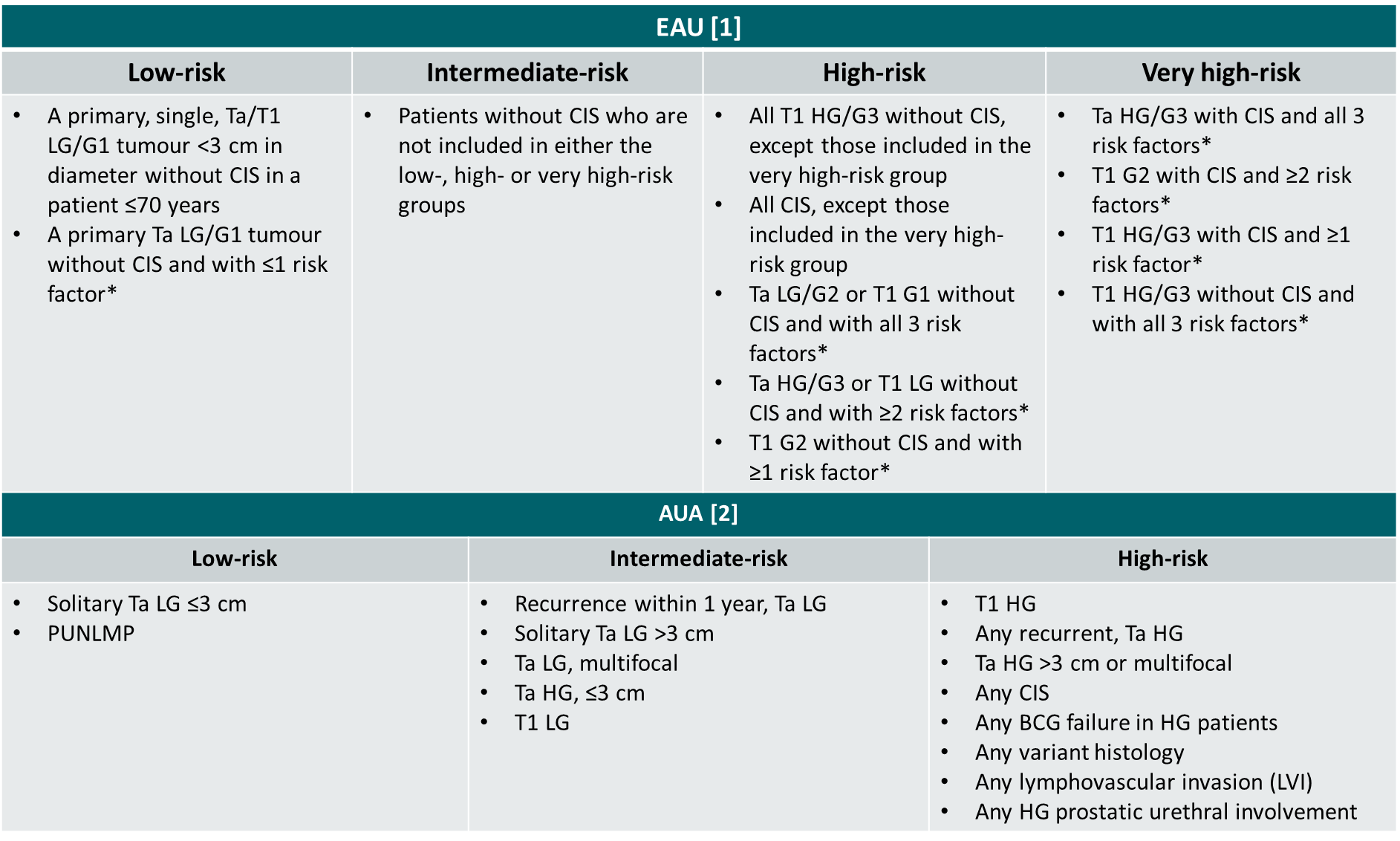Background & relevance
The EAU and AUA/SUO guidelines recommend the stratification of patients with NMIBC into risk groups based on their probability of progression to muscle-invasive disease [1,2].
The EAU risk stratification consists of 4 risk groups (low, intermediate, high and very high) and takes into account, on top of stage and grade, the following clinical risk factors [1]:
- Age >70 years
- Multiple papillary tumours
- Tumour diameter >3 cm
Meanwhile, the AUA risk stratification for NMIBC consists of 3 risk groups (low, intermediate and high) [2].
NMIBC risk stratification according to the EAU and AUA guidelines
The World Health Organization (WHO) 2002/2022 classification system (PUNLMP vs LG vs HG) is currently supported by the WHO for clinical application. Nevertheless, the WHO 1973 classification system (G1 vs G2 vs G3) is still being used [1].
Clinical risk factors: age >70; multiple papillary tumours, tumour diameter ≥3 cm
G: grade; HG: high-grade; LG: low-grade; PUNLMP: papillary urothelial neoplasm of low malignant potential
- Gontero P, Compérat E, Dominguez Escrig JL et al. European Association of Urology (EAU) guidelines on non-muscle-invasive bladder cancer (TaT1 and CIS). Update March 2023. Available at: https://uroweb.org/guideline/non-muscle-invasive-bladder-cancer/
- Chang SS, Boorjian SA, Chou R, et al. Diagnosis and treatment of non-muscle invasive bladder cancer: American Urological Association (AUA)/Society of Urologic Oncology (SUO) guideline. Update 2020. Available at: https://www.auanet.org/guidelines/guidelines/bladder-cancer-non-muscle-invasive-guideline

